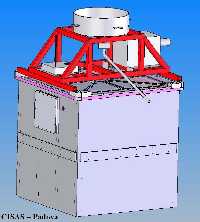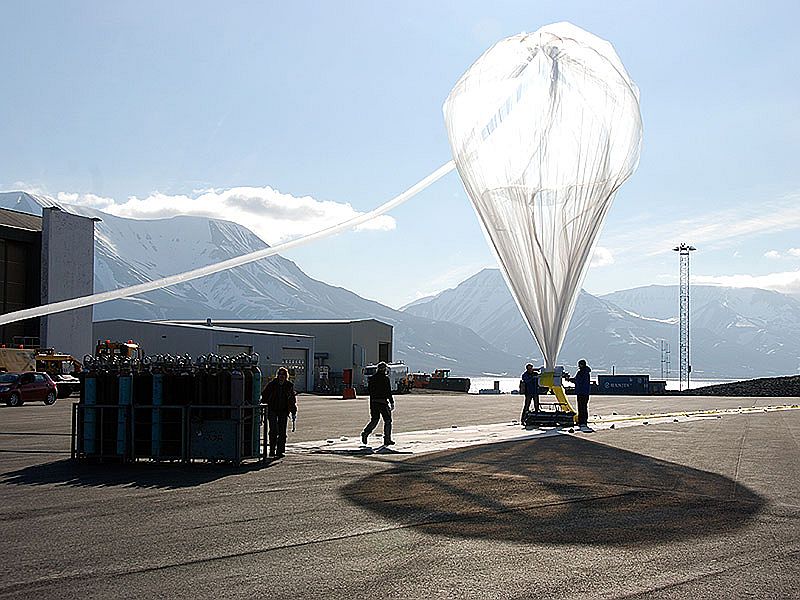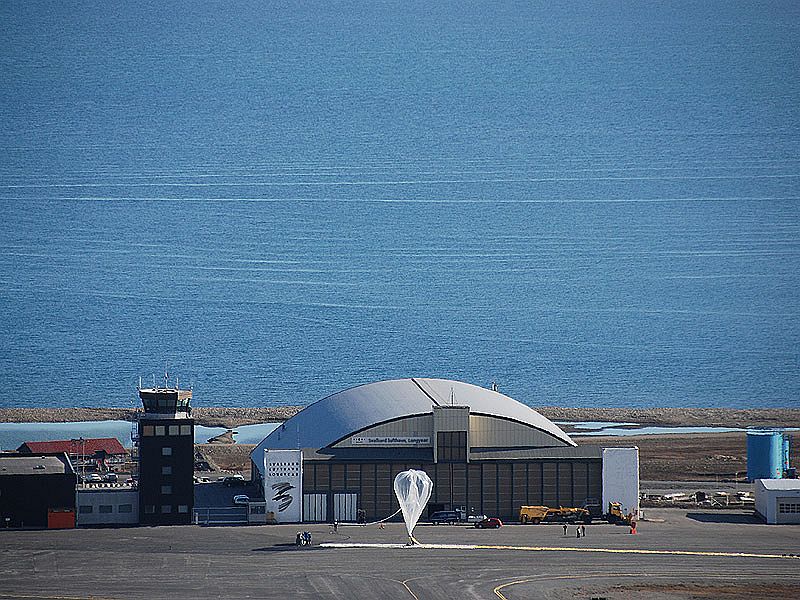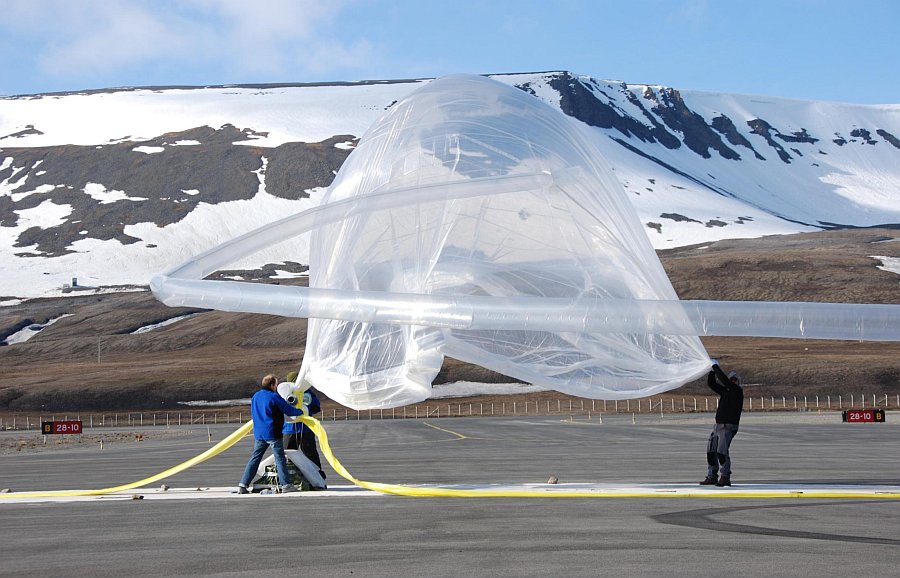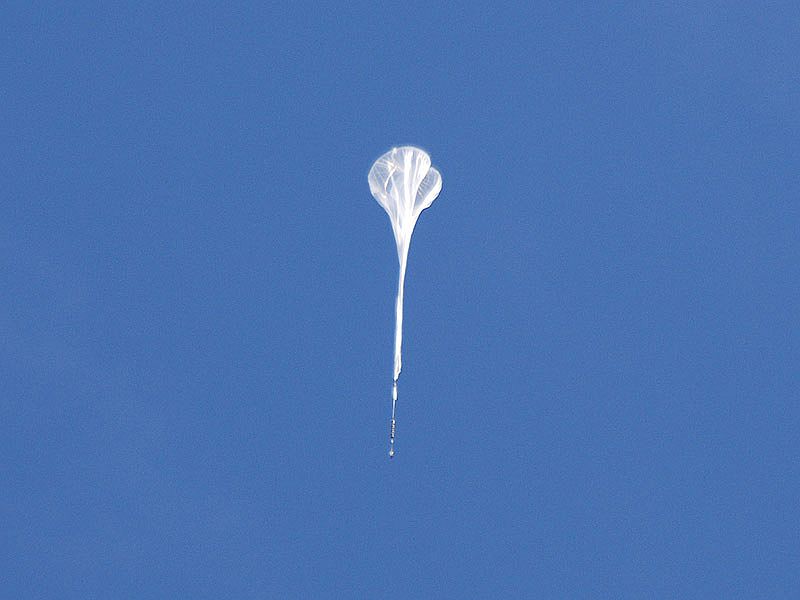Purpose of the flight and payload description
The instrument was designed to be flown as stand-alone payload under a stratospheric balloon to bring back aerosol samples where abundance, size distribution, composition and mineralogy will be measured for each class of materials collected.
A sampling of the stratosphere will invariably include particles from different sources with relative contributions that vary as a function of time, altitude, and possibly geographic location. At any time the stratosphere contains extraterrestrial dust, dust from natural terrestrial sources (volcanic dust, wind-blown dust, biomass burning) and dust related to anthropogenic activities. The dust is collected by direct deposition on both holey-carbon thin films supported by standard Transmission Electron Microscopy (TEM) grids and other substrates.
After the flight the collected dust is analysed in laboratory by Scanning and Transmission Electron Microscopy (SEM, TEM), Analytical Electron Microscope (AEM), X-Ray Fluorescence (XRF), Fourier Transform InfraRed (FTIR) spectroscopy, and Secondary Ions Mass Spectrometry (SIMS) without removing candidate particles, thus minimizing contamination by extraneous dust.
Video footage of the launch
Details of the balloon flight
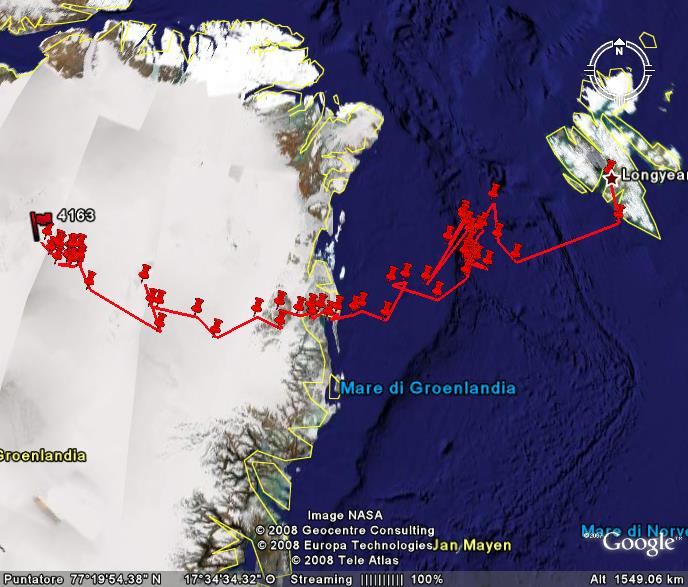
Balloon launched on: 6/21/2008 at 6:05
Launch site: Longyearbyen Airport, Svalbard, Norway
Balloon launched by: ISTAR (International Science Technology And Research)
Balloon manufacturer/size/composition: Zero Pressure Balloon Aerostar SF4 1.105-.6/0TA - 10.000 m3
End of flight (L for landing time, W for last contact, otherwise termination time): 6/25/2008
Balloon flight duration (F: time at float only, otherwise total flight time in d:days / h:hours or m:minutes - ): 4 d
Landing site: Near the Thule Air Base, Greenland
After two weeks of readiness and testing at University Centre at Svalbard (UNIS), the DUSTER payload was launched on June 21, 2008 at 06:05 UTC. The launch was performed in perfect conditions with about 3 kts of wind and partly cloudy skies.
The balloon reached an altitude of 36 kilometres and maintained this float altitude during the entire flight. Four days after the launch the payload was terminated close to Thule Air Base in northern Greenland and immediately recovered by Air Greenland by use of a helicopter.
The payload was then returned to Norway and sent on to Italy where analysis of the samples began.
External references
- Characterization of the DUSTER instrument for stratospheric dust collection and Raman analysis of stratospheric samples. De Angelis, Simone, Tesi di dottorato
- Collecting Dust in the Upper Stratosphere at high latitudes: Constraints on the Compositions of Cosmic Dust Particles EPSC Abstracts - Vol. 5, EPSC2010-175, 2010
- DUSTER (Dust in the Upper Stratosphere Tracking Experiment and Retrieval) - PRELIMINARY ANALYSIS Mem. S.A.It. Suppl. Vol. 16, 119
- DUSTER (Dust in the Upper Stratosphere Tracking Experiment and Return) a balloon-borne dust particle collector Mem. S.A.It. Suppl. Vol. 16, 14
- Duster pictures by ISTAR group at Picasa web albums
- DUSTER: collection of meteoric CaO and carbon smoke particles in the upper stratosphere Memorie della Societa Astronomica Italiana, v.87, p.210 (2016)
- ISTAR Group website of the group that managed the entire launch operation
- Meteoric CaO and carbon smoke particles collected in the upper stratosphere from an unanticipated source Tellus B, Vol 65 (2013)
- Sampling the constant drizzle of meteoric dust in the upper stratosphere Meteoroids 2013, Proceedings of the Astronomical Conference,held at A.M.University, 2013
- Stratospheric dust collection by DUSTER (Dust in The Upper Stratosphere Tracking Experiment and Retrieval), a balloon-borne instrument, and laboratory analyses of collected dust. Submitted for the degree of Philosophiae Doctor in Aerospace Engineering by Alessandra Ciucci
2983If you consider this website interesting or useful, you can help me to keep it up and running with a small donation to cover the operational costs. Just the equivalent of the price of a cup of coffee helps a lot.

